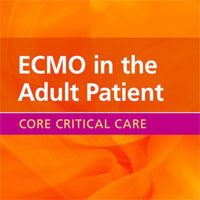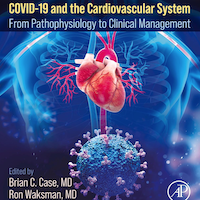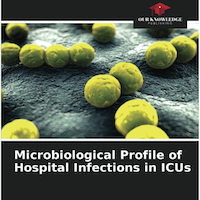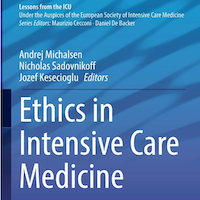Tag: sepsis
Big Data Detects Sepsis In Major Hospitals
Data analytics have found that large medical facilities have higher rates of death from sepsis than their smaller hospital counterparts. Researchers from Houston Methodist Hospital recently used Big Data analytics to learn... read more

Fluid resuscitation in human sepsis: Time to rewrite history
Fluid resuscitation continues to be recommended as the first-line resuscitative therapy for all patients with severe sepsis and septic shock. The current acceptance of the therapy is based in part on long history and familiarity... read more

Evaluating the Validity of Sepsis-3 Criteria in the Emergency Department
In this multicenter prospective cohort study involving 879 patients with suspected infection treated at the emergency department, the qSOFA was better at predicting in-hospital mortality with an area under the receiver operating... read more

Antipyretic Therapy in Critically Ill Septic Patients
This meta-analysis aimed to examine the impact of antipyretic therapy on mortality in critically ill septic adults. Inclusion criteria were observational or randomized studies of septic patients, evaluation of antipyretic... read more

Venous congestion: are we adding insult to kidney injury in sepsis?
In critical illness, septic shock is a contributing factor in nearly half of all cases of acute kidney injury (AKI). Traditional approaches to prevention of organ dysfunction in early sepsis have focused on prevention of... read more
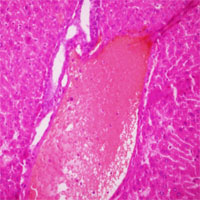
Komodo dragon-inspired synthetic peptide DRGN-1 promotes wound-healing of a mixed-biofilm infected wound
Cationic antimicrobial peptides are multifunctional molecules that have a high potential as therapeutic agents. We have identified a histone H1-derived peptide from the Komodo dragon (Varanus komodoensis), called VK25. Using... read more

The impact of emergency department crowding on early interventions and mortality in patients with severe sepsis
Critically ill patients require significant time and care coordination in the emergency department (ED). We hypothesized that ED crowding would delay time to intravenous fluids and antibiotics, decrease utilization of protocolized... read more

Relative Bradycardia in Patients With Septic Shock Requiring
Relative bradycardia in patients with septic shock is associated with lower mortality, even after adjustment for confounding. Our data support expanded investigation into whether inducing relative bradycardia will benefit... read more

Meta-analysis confirms EGDT for sepsis is unhelpful and wasteful (PRISM)
Three large, well-conducted randomized trials around the world (ProCESS, ARISE, and ProMISe) all agreed: use of early goal-directed therapy (EGDT) for sepsis does not improve mortality or any other important clinical outcome.... read more
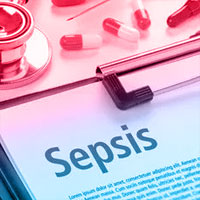
Early, Goal-Directed Therapy for Septic Shock
After a single-center trial and observational studies suggesting that early, goal-directed therapy (EGDT) reduced mortality from septic shock, three multicenter trials (ProCESS, ARISE, and ProMISe) showed no benefit. This... read more

Surviving Sepsis Campaign Guidelines: 2016 Update
Ludwig Lin, MD, speaks with Mitchell M. Levy, MD, MCCM, about the release of the "Surviving Sepsis Campaign: International Guidelines for Management of Sepsis and Septic Shock: 2016," presented at the 46th Critical Care Congress... read more
Vitamin C and the Ethics of Borrowing data
I was recently amazed to be engaged in a Twitter kerfuffle which generated more than 10,000 Impressions within 24 hours. Passions were running high, libellous comments were being broadcast, and old friendships seemed to be... read more

Predicting and measuring fluid responsiveness with echocardiography
Echocardiography is an essential tool to predict and measure fluid responsiveness, according to a recent article, which provides a practical guide. Ashley Miller and Justin Mandeville outline the physiological basis of fluid... read more
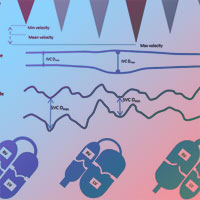
Doctor Turns Up Possible Treatment For Deadly Sepsis
It is hard not to get excited about news of a potentially effective treatment for sepsis, a condition that leads to multiple organ failure and kills more people in the hospital than any other disease. The study, from Eastern... read more

What’s new in the extracorporeal treatment of sepsis?
Clinical research has shown that endotoxin is indeed circulating in the blood of up to 50% of sepsis shock patients and associated with impaired clinical outcome. In view of the pivotal role of endotoxin in sepsis patients,... read more
The ICM research agenda on ICU-acquired weakness
Intensive care unit (ICU)-acquired weakness (ICUAW) develops as a complication of critical illness and may represent the extreme end of a spectrum of weakness that begins with any serious illness regardless of care location.... read more
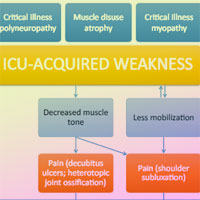
Preadmission Oral Corticosteroids Are Associated With Reduced Risk of ARDS in Critically Ill Adults With Sepsis
The unadjusted occurrence rate of acute respiratory distress syndrome within 96 hours of ICU admission was 35% among patients who had received oral corticosteroids compared with 42% among those who had not (p = 0.107). In... read more

Vasopressors: Future Research
Margaret Parker, MD, MCCM, speaks with Lakhmir S. Chawla, MD, about future research related to the Congress session "Bench-Pressing in the ICU: Which Vasopressor Agent Should I Choose for My Patient?" which he presented... read more





